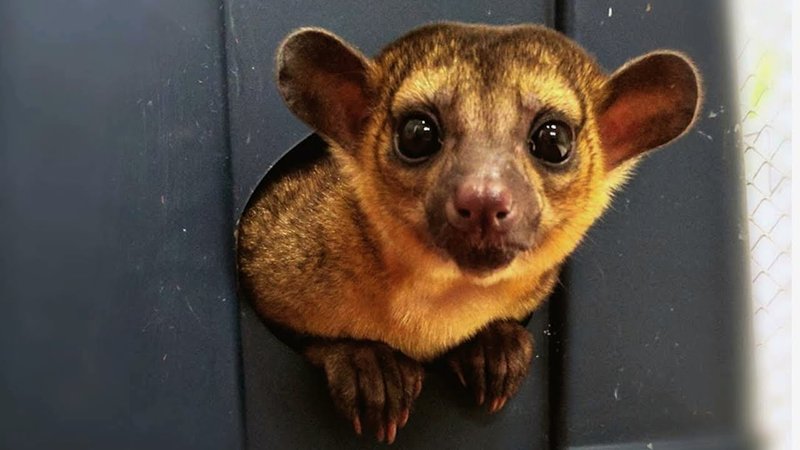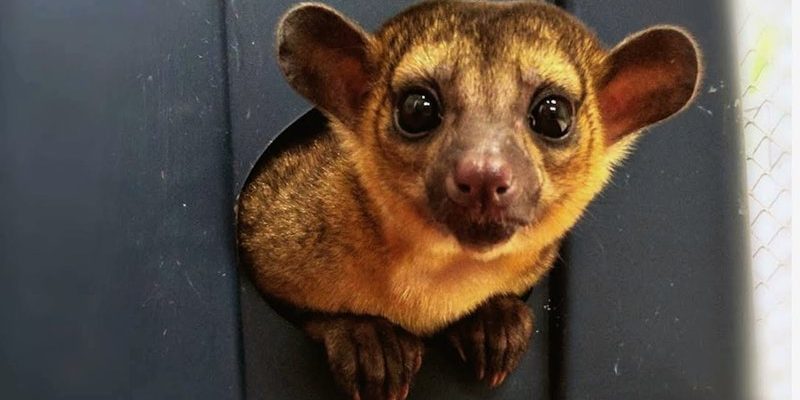
When people consider bringing a kinkajou into their lives, it’s easy to imagine snuggling with one while enjoying their goofy antics. However, it’s essential to understand that, despite their adorable appearance, they possess instincts and behaviors that can be less than ideal for human interactions. Think of it like adopting a wild animal—you might fall in love with their charm, but there’s always a side that requires careful handling. So, what should you know about the potential risks that come with these enchanting creatures?
Understanding Kinkajou Behavior
Kinkajous are known for their playful and inquisitive nature. They’re nocturnal, so you might catch them zooming around during the night like a kid on a sugar rush. While they can be affectionate, they are still wild animals. Their natural instincts can lead to behaviors that might surprise you.
You might be wondering what these behaviors look like on a day-to-day basis. Well, kinkajous love to climb and explore. They have sharp claws and teeth—perfect for their natural habitat, but not so great for human interactions. When they feel threatened or cornered, they might bite or scratch. It’s their way of saying, “Back off!” Understanding their natural instincts is crucial if you’re considering having one as a pet.
Moreover, kinkajous are also quite vocal. They communicate with a range of sounds, from barks to screams. This can be entertaining, but it can also be disruptive, especially at night when you’re trying to sleep. It’s like having a tiny, furry roommate with a wild side—adorable, but not always convenient.
The Risks of Kinkajou Ownership
Now, let’s talk about the risks more directly. While kinkajous can be friendly, they can also pose dangers that potential owners should consider. First off, there’s the risk of bites. Kinkajous have sharp teeth, and while they might not mean harm, a startled kinkajou can quickly become defensive. A bite can lead to infections or other health issues, especially if the wound isn’t properly treated.
Another significant concern is their potential for aggression. Unlike domesticated pets, kinkajous retain many of their wild instincts. They may not react well to sudden movements or unfamiliar situations. While you might think you can train them, their temperament can change on a dime. It’s not uncommon for them to display erratic behavior if they feel stressed or threatened. That’s part of their wild nature.
Finally, there’s also the matter of socialization. If kinkajous don’t receive enough positive human interaction, they may not develop the desirable traits you would hope for in a pet. Neglect can lead to behavioral problems, and before you know it, you have a kinkajou that doesn’t want to be around you.
Health and Safety Considerations
The health aspect is another important factor. Kinkajous can carry diseases that may be harmful to humans. For instance, they are susceptible to certain parasites that can transmit diseases to their owners. If you’re considering adopting one, regular vet visits and maintaining their health is a must, but it can be costly and time-consuming.
Additionally, you should be aware of a kinkajou’s diet. They might look like they could snack on whatever you offer, but they have specific nutritional needs. Feeding them the wrong food can lead to health issues, which can affect their behavior. So, it’s not just about cuddling; it’s about commitment.
Moreover, if you’re in a household with small children or other pets, you’ll want to think twice. Kinkajous might not react well to younger kids or existing pets, potentially leading to bites or fights. It’s essential to ensure that everyone in the household is safe.
Legal and Ethical Considerations
Before getting too excited about having a kinkajou as a pet, let’s talk about the legalities. In many places, owning a kinkajou is not legal without special permits. This is because they are classified as exotic pets. Always check your local laws before considering any exotic animal.
Even if they are legal to own, think about whether it’s ethical to keep a wild animal at home. Kinkajous are meant to be in their natural habitat, swinging through trees and foraging for fruits. By keeping them as pets, are we stripping them of their natural behaviors? It’s a thought-provoking question that many potential owners need to consider.
If you’re seriously thinking about adopting one, look into rescue organizations that can guide you. They may have kinkajous that need homes, and adopting from a rescue can be more ethical than buying from a breeder.
Alternatives to Kinkajous
If you love the idea of having a playful and adorable pet but are concerned about the risks of owning a kinkajou, think about other options. There are many domesticated animals that have similar charming features but are easier to care for and safer for a household environment.
For example, consider adopting a ferret. They are also playful and inquisitive but are generally easier to manage. Their health and dietary needs are well-understood, making them a more straightforward pet choice. Plus, they can still bring that same touch of wildness to your home.
Another option could be a guinea pig. While they don’t climb trees like kinkajous, they are social animals that enjoy interaction and can be quite entertaining. You get the joy of having a furry friend without the wild instincts that come with kinkajous.
Final Thoughts
In conclusion, while kinkajous are undeniably cute and interesting animals, they do come with risks that potential owners must carefully consider. From their sharp teeth to their unpredictable behavior, having a kinkajou can be more challenging than it seems. It’s essential to weigh the pros and cons before deciding to welcome one of these delightful yet wild creatures into your home.
If you’re still set on having a kinkajou, make sure to do your homework. Understand their needs, potential risks, and the legal requirements involved in ownership. The charm of a kinkajou comes with the responsibility of being a good pet owner.
In the end, whether you opt for a kinkajou or another pet, the focus should always be on ensuring a good quality of life for both you and your furry friend. So, go ahead and explore, but do it mindfully!

